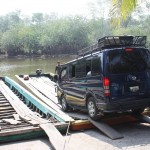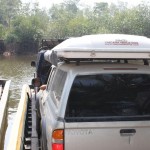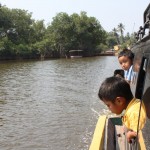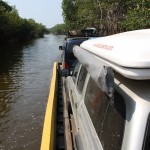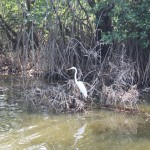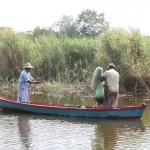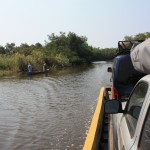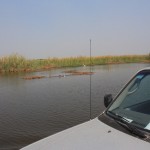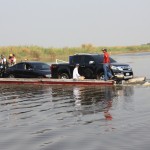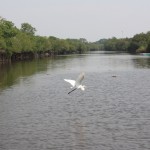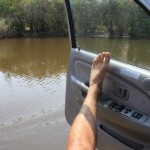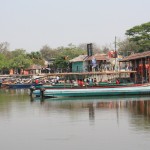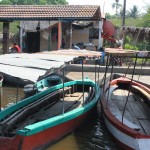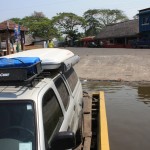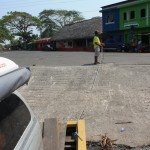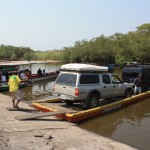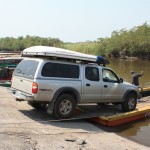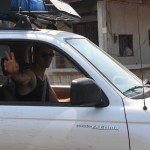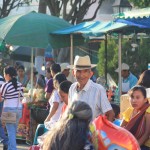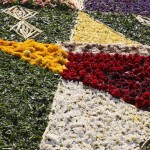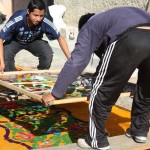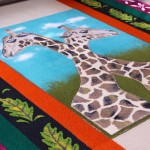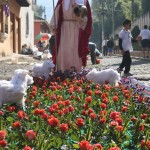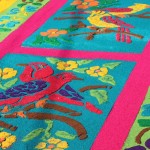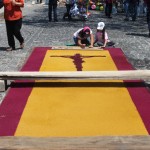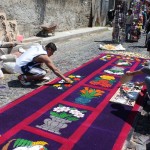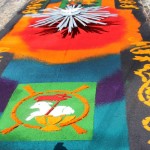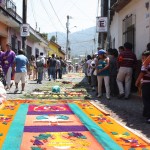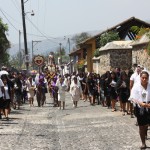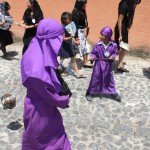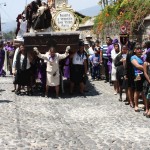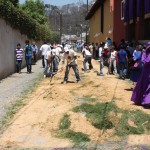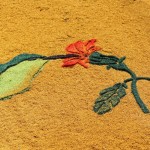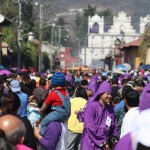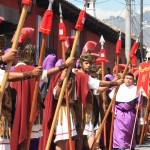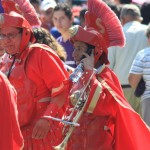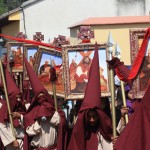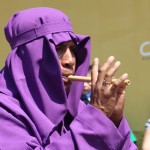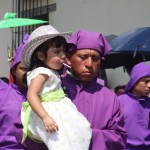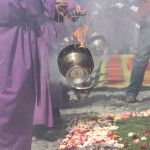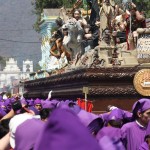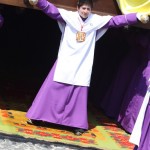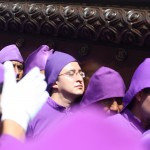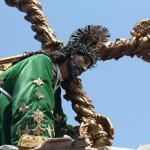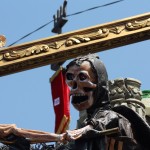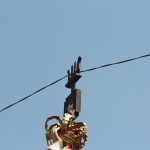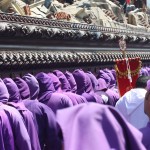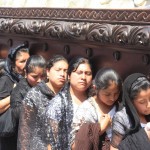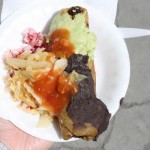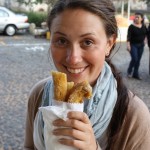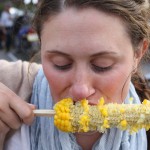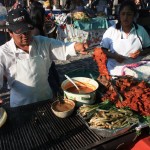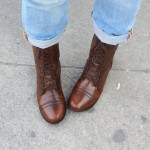The highlight of the day was getting on the sketchiest car ferry ever … There are two options to go from Monterrico to El Salvador. The first is to drive back North the way we came. The second option is to take ‘a small ferry’ for $10 USD. The second option would save us over 100 miles of driving so we opted immediately for the so called ‘ferry’. The cable ferries in Yukon are luxury cruises in comparison to what we got on. And, yes, we had to get out of this thing in reverse … Oh, and did I mention that while we were floating down the canal, the outboard motor kept stalling. The prop would stop every so often (probably from being wrapped in seaweed). The guy would just lift the outboard out of the water and clean the prop by hand while the ‘ferry’ drifted in whichever direction. By the way, we saw anther ferry going in the opposite direction. There was a guy bailing with a little bucket… I guess it could be worse :).
We had another fun experience that day. Two miles outside the border in El Salvador we got pulled over by 3 cops. These guys were real cops, but they had no reason to stop us. It was more than clear they were looking for a way to get money out of us. After all, we had just crossed the stupid border 2 miles ago … probably our paperwork is fine … Anyways, we played very unfriendly with them and when they wanted passports etc we gave them only photocopies. The whole time I had the driver’s window only 4 inches down … After a five minutes of head scratching on what to do with us, they let us go. No money paid, no harm done.
We made it to a pretty surfing beach. We are staying at a spartan bungalow with private bathroom. The weather is +35C. Water is super warm as well. The plan is … well we don’t have a plan at the moment. The only certain thing is that we will be moving quickly out of El Salvador towards Nicaragua. We will probably cross Honduras without sleeping in the country.
- Yes, that guy is bailing …
- Apparently it could be worse …




